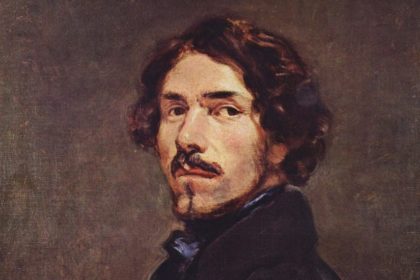Wuthering Heights is a 1939 American drama romance movie directed by William Wyler and produced by Samuel Goldwyn. It’s based on the novel of the same name by Emily Bronte. The movie depicts only 16 of the novel’s 34 chapters, eliminating the second generation of characters. The novel was adapted for the screen by Charles MacArthur, Ben Hecht and John Huston. Take a look below for 27 more interesting and fascinating facts about Wuthering Heights.
1. The movie won the 1939 New York Film Critics Award for Best Film.
2. Wuthering Heights earned nominations for eight Academy Awards, including Best Picture and Best Actor in what many consider Hollywood’s greatest single year.
3. It was mostly filmed in Thousand Oaks, California, with scenes shot in Wildwood Regional Park and at the current site of California Lutheran University.
4. In 2007, Wuthering Heights was selected for preservation in the United States National Film Registry by the Library of Congress as being, “culturally, historically, or aesthetically significant.”
5. Merle Oberon and Laurence Olivier apparently detested each other. Legend has it that when William Wyler yelled “Cut!” after a particularly romantic scene, Oberon shouted back to her director about her co-star, “Tell him to stop spitting at me!”
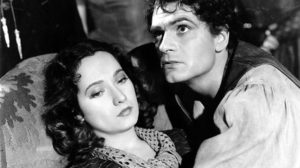
6. Producer Samuel Goldwyn felt that the script was too dark for a romance movie, so he asked several writers to do a rewrite on the script, including a young John Huston, who said that the script needed no rewrite, it was perfect as it was.
7. David Niven dreaded the movie not only because he was playing a thankless, secondary role, but because he dreaded working with William Wyler again. Merle Oberon was uncomfortable working with Niven after they year long love affair that ended in 1936.
8. Vivien Leigh wanted to play the lead role, alongside her then lover and future husband Laurence Olivier, but studio executives decided that the role should go to Merle Oberon. They later offered Leigh the part of Isabelle Linton, but she declined and Geraldine Fitzgerald was cast.
9. David Niven stated that the heather, imported from England and replanted at Thousand Oaks, enjoyed the Californian sunshine to such an extent that it tripled in size and had to be radically cut back before filming could take place.
10. Both of the leading players began work on the movie, miserable at having to leave their loved ones back in England. Laurence Olivier was missing his fiancee Vivien Leigh and Oberon had only recently fallen in love with film producer Alexander Korda.
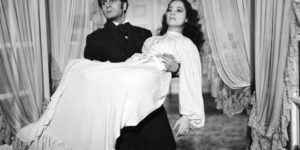
11. The Mitchell Camera Corporation selected Gregg Toland and Wuthering Heights to be the first to use their new Mitchell BNC camera. This camera model would become the studio standard.
12. Samuel Goldwyn later claimed that Wuthering Heights was his favorite production.
13. The movie wasn’t a big financial success when it was first released. It had to be re-released years later to earn a profit.
14. In one scene, William Wyler insisted that David Niven break down. When Niven told him his contract said he would never have to cry on camera, Wyler didn’t believe him. Niven got the contract and the “no crying” clause was in there.
15. Ronald Colman, Douglas Fairbanks Jr., James Mason and Robert Newton were all considered for the part of Heathcliff. Charles Boyer’s biography, “The Reluctant Lover” claims that he turned down the role also.
16. All the actors, particularly Laurence Olivier and David Niven, were incensed by William Wyler’s propensity for numerous takes. Niven quickly found that despite Wyler’s earlier assurances to the contrary, the director had not changed at all. He demanded at least 40 takes for Niven’s first scene in the movie.
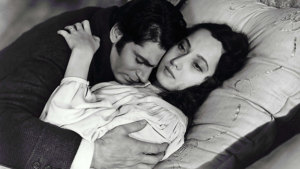
17. Producer Samuel Goldwyn wanted to change the title of the movie. “Bring Me the World” and “The Wild Heart” were two possibilities.
18. The time setting of the novel, the early 19th century, was updated to about 1841 because Samuel Goldwyn and his designers thought that the later period’s off the shoulder gowns would showcase Merle Oberon and the other female stars to greater effect.
19. About 500 acres of the hills were stripped of their natural vegetation, and 15,000 pieces of tumbleweed were brought in and topped with purple-painted sawdust to resemble heather.
20. Lux Radio Theater broadcast a 60 minute radio adaption of the movie on September 14, 1954, with Geraldine Fitzgerald reprising her film role.
21. The movie came in 13 days over schedule and more than $100,000 over budget.
22. More than once, Merle Oberon was reduced to tears by William Wyler’s methods. When Cathy had to run out onto the moors in a fierce storm to stop Heathcliff from leaving, Wyler ordered the actress over and over into propeller-driven winds and rain. After many takes, she began to choke and vomit. She ran a fever and had to be confined to a hospital bed, costing the production thousands of dollars. She refused to do the scene again until Samuel Goldwyn rigged heaters to warm the driving rain.
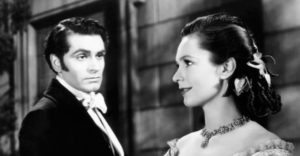
23. Animal lovers were angry when they read in a press release that, to keep the barnyard noises from overwhelming the soundtrack, the animal trainer had cut the vocal cords of the ducks and geese on the set.
24. During the storm sequence, Merle Oberon twisted her foot and with Laurence Olivier suffering from a severe case of athlete’s foot, both stars hobbled for a while.
25. Wuthering Heights is included among the 1001 Movies You Must See Before You Die, which is edited by Steven Schneider.
26. The movie was a direct inspiration for Kate Bush’s first 1978 hit song “Wuthering Heights.”
27. Oberon’s widower, Robert Wolders, was 43 years old when she died.


